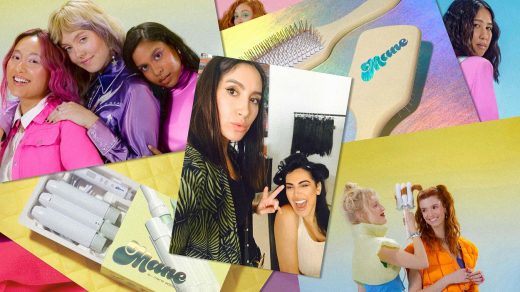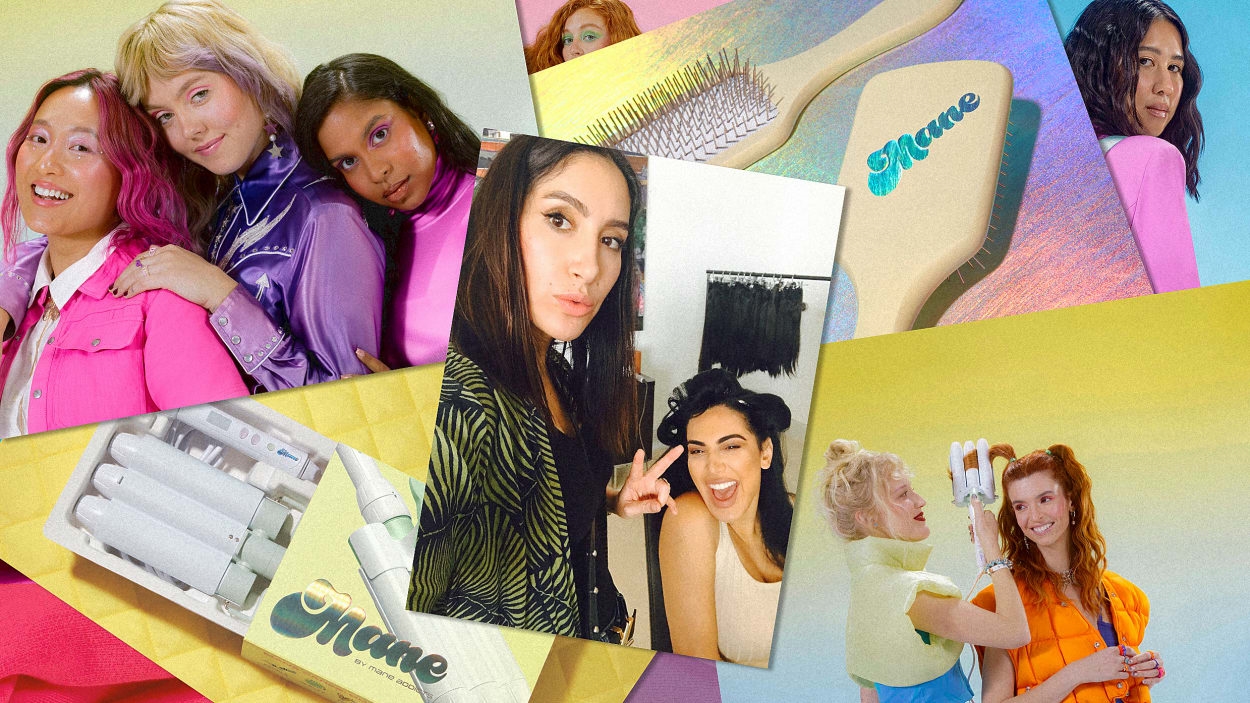This celebrity hairstylist used her digital platform Mane Addicts to launch her new brand
By Yasmin Gagne and Alyssa Khan
As a beauty industry veteran, Jen Atkin knows what it takes to build a successful brand—her haircare line, Ouai, has become a mainstay at retailers like Sephora and Ulta since its 2016 debut. But with her new venture, Mane by Mane Addicts, Atkin is using the success of her hair-focused website, creative agency, artist network, and social media content platform Mane Addicts, which has 4.5 million followers across Instagram, Pinterest, and TikTok, as a springboard into the direct-to-consumer beauty space at a challenging time for such brands.
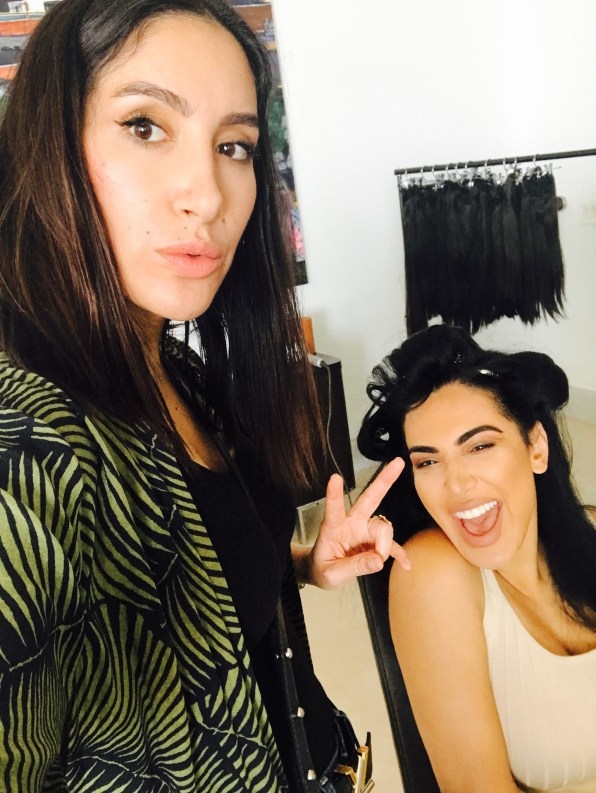
With early offerings that include a hair waver, hairbrush, and pastel accessories like a neoprene hot-tool sleeve and lavender puffy nylon travel case, Mane by Mane Addicts is being sold exclusively on Mane Addicts, Atkin’s 9-year-old beauty website and social media content platform. From its start as a way to showcase hairstyles and stylists alongside tutorials, the platform has evolved into a creative agency, artist network, and trend forecasting agency. Atkin—who has worked as a hairstylist to stars like Kim Kardashian, Jessica Alba, and Chrissy Teigen—is looking to tap into these trends to break through in a crowded, and somewhat sluggish, DTC beauty market.
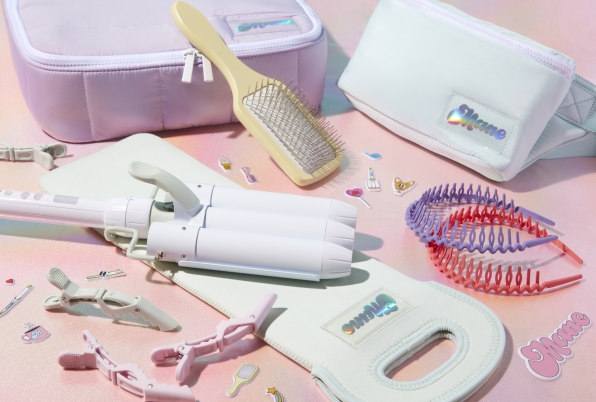
Breaking through the noise
Mane’s launch comes a decade after Glossier pioneered the DTC beauty model, effectively writing the playbook for the landscape. The two companies share similar origin stories, both launching from content platforms. But it’s not 2014 anymore.
Glossier has struggled in recent years. Bloomberg Second Measure reported that in 2021, Glossier’s U.S. sales were down 26% from the previous year, and in January 2022, the company laid off roughly a third of its employees. Founder and CEO Emily Weiss stepped down in May; Kyle Leahy took her place and restructured the company. Now, instead of only direct-to-consumer sales, the company will offer its products in Sephora. Mane’s debut coincides with the opening of Glossier’s Soho flagship store and marks a new era for the beauty industry in which accessibility and affordability reign supreme.
“We create content on Mane Addicts for everyone out there, and we’ve always featured products at a low price point,” Atkin says. “When we were crowdsourcing our community, that was very important to them—these products should not cost a paycheck.” With prices starting at $10 and going up to $75, Atkin’s new product line plays in the same category as Glossier—slightly above drugstore prices but still fairly accessible. The pricing strategy also differs from the higher-end Ouai, where a bottle of shampoo costs around $30.
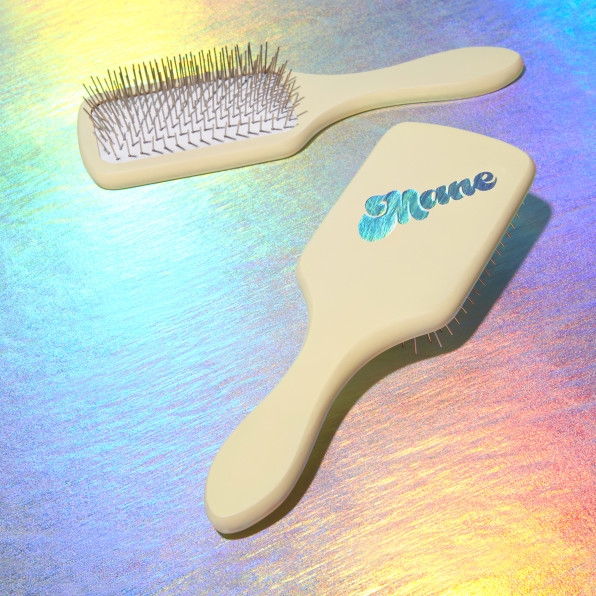
In the time since the Mane Addicts platform launched nearly a decade ago, searches for cheaper dupes of high-end products have surged as social media has sped up the trend cycle. Glossier’s launch in 2014 was the first time many customers experienced a social-media-first brand; now there are hundreds on TikTok and Instagram and more launching every day.
One macro trend could work in Mane’s favor. Namely, that the hair tools segment has grown more slowly than others in the hair category, and Atkin is filling some white space in haircare between ultra-high-end tools like the Dyson Airwrap and less-expensive tools available to purchase in drugstores. “She saw the perfect niche that has been untapped,” says John Paul Mitchell Systems haircare group CEO Michaeline DeJoria, who invested in Mane.
As for gaining traction online, Mane already has established credibility in the haircare industry via the Mane Addicts content platforms. Atkin’s strong celebrity ties and loyal following provide a built-in audience for Mane and the possibility that stylists who use the platform will share info about the products with their followers.
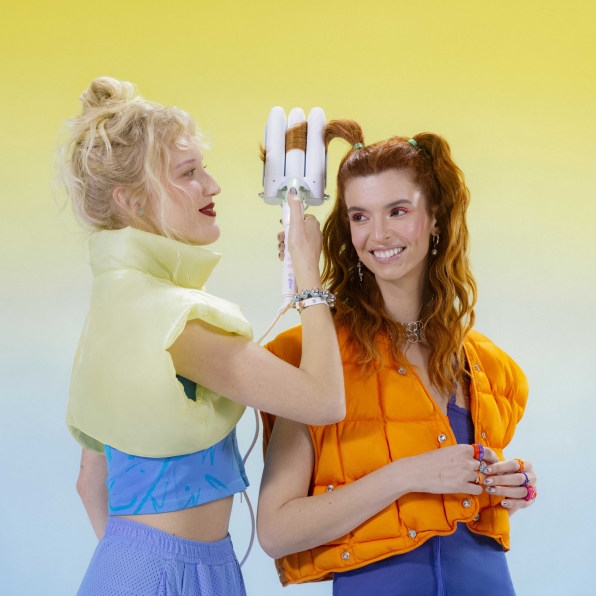
“While a few brands have tried, you can’t really plan to go viral,” says Jaimee Lupton, cofounder of Monday Haircare, whose affordable shampoo and conditioning products are beloved on TikTok. “It’s more so about building awareness and brand recognition as a base, and then being prepared to jump on trends or cleverly tap into viral momentum if it arises.”
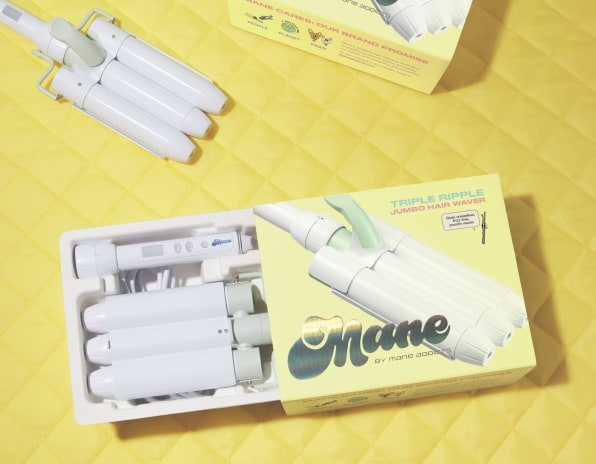
Product design and rollout strategies are also crucial. Dianna Cohen, a former Into the Gloss intern and the founder of haircare brand Crown Affair, says she is seeing newer brands embrace maximalism and Y2K-inspired designs, giving the examples of skincare brands Topicals and Starface. The pastel, space-age Mane design is a stark contrast to the minimalist branding of Atkin’s other brand, Ouai, and the signature millennial-pink Glossier packaging. Atkin’s mood board as she created the brand had retro photos of Baby-G watches and the Olsen Twins’ signature “undone” hairstyles.
Mane launched with eight SKUs, with more products already developed for upcoming releases, understanding that customers want new items more frequently. Similarly, Glossier recently made the decision to offer customers new products every few weeks, upping its drops from roughly four per year, and plans to open more brick-and-mortar stores in 2023.
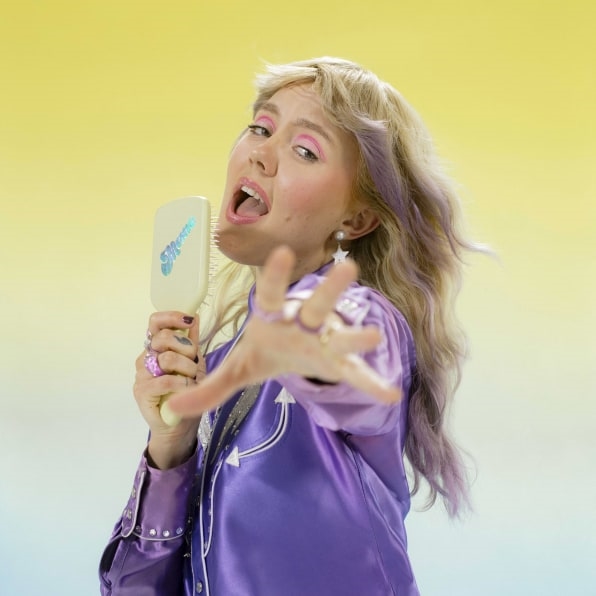
Building a brand community
Because simply offering on-trend products is no longer enough, Atkin is building an environmentally conscious ethos into the brand. With the launch of Mane comes a hair tool recycling and refurbishment program in partnership with nonprofits Pact Collective and Project Glimmer. Tools that cannot be refurbished will be recycled through Pact, and tools that still work and can be refurbished will be donated to Project Glimmer.
She’s also focusing on education, filming a soon-to-be-released hairstyling workshop for MasterClass in which she uses the tools alongside content for the Mane Addicts and separate Mane by Mane Addicts social media channels—all designed to get shoppers engaged with Mane.
Crown Affair’s Cohen says that she has seen changes in the way people interact with brands online, noting that commenters and reviewers on YouTube, Pinterest, Instagram, TikTok, and private social media communities all give different types of feedback. “Content is king, but community management is queen,” she says. “It’s gotten richer in the sense that everyone feels empowered to comment in a way that I think they didn’t 10 years ago.”
She adds that attention spans are also shorter, and the fact that consumers are viewing more videos on social media gives brands the opportunity to educate their customers with tutorials rather than relying on static images.
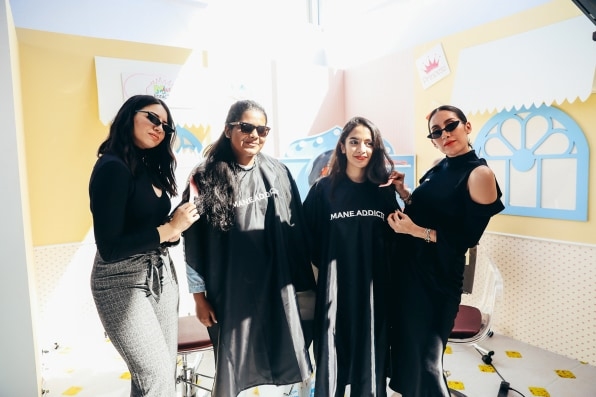
Huda Beauty and Wishful founder Huda Kattan and her sister Mona (also a beauty industry entrepreneur, with perfume brand Kayali and content platform Scentgasm) are both backers of Mane by Mane Addicts. Huda Kattan says the platform, in conjunction with Atkin’s tutorials, will help attract and engage customers who are eager to re-create makeup looks and hairstyles that require a high level of skill. “There’s no question that the standards of glam are far higher,” she says.
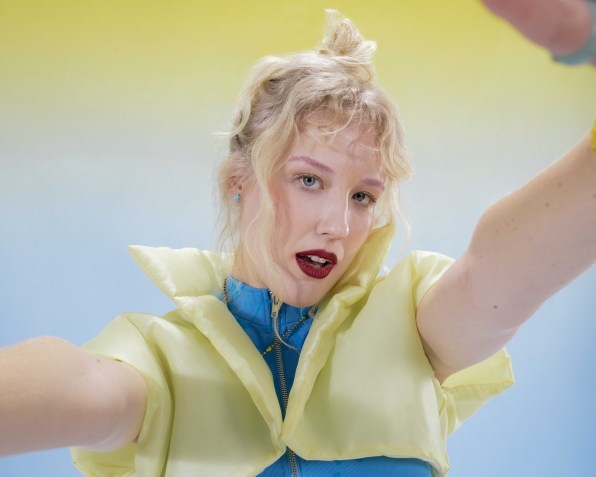
With the Kattan sisters’ backing, Atkin also has access to their experience growing brands outside of traditional beauty hubs like California or New York—something she hopes will help grow Mane into a global brand. “Social media has broken down so many barriers. Huda and Mona understand how customers behave in Europe and in the Middle East,” she says. “I want to make sure that we can get [Mane] in front of as many people in as many countries. We’re not going to limit ourselves.”
(28)

